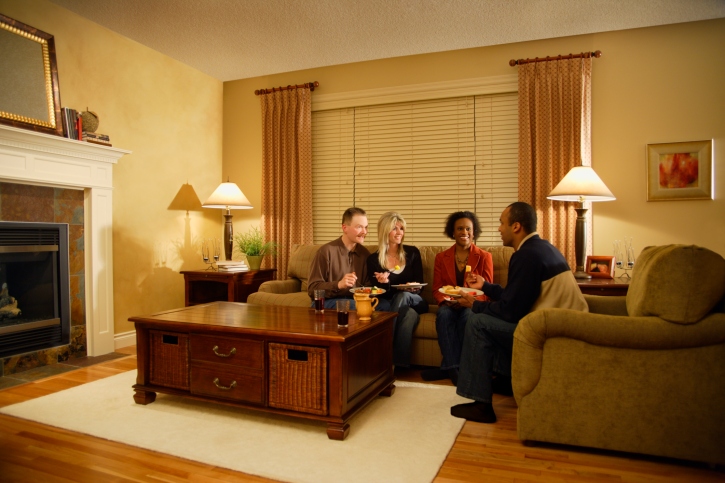What’s Ahead For Mortgage Rates This Week – August 10, 2015
 This week’s scheduled economic news includes reports on construction spending, a survey of senior loan officers, and reports on labor markets including ADP private sector jobs, the federal government’s reports on non-farm payrolls, core inflation and the national unemployment rate.
This week’s scheduled economic news includes reports on construction spending, a survey of senior loan officers, and reports on labor markets including ADP private sector jobs, the federal government’s reports on non-farm payrolls, core inflation and the national unemployment rate.
Construction Spending Slows, Loan Officers Survey Suggests Growing Confidence
Construction spending fell in June after the May reading was revised upward to 1.89 percent from the original reading of 0.90 percent. Spending for residential construction rose by 0.40 percent, while non-residential construction spending remained flat. The seasonally-adjusted annual outlay for construction was $1.06 billion in June.
Analysts continue to note a trend toward construction of smaller residential units including condominiums and apartments, with an emphasis on rental properties. This supports reports that would-be homebuyers are taking a wait-and-see stance to see how factors including rising home prices, fluctuating mortgage rates and labor market conditions perform.
According to a survey of senior loan officers conducted by the Federal Reserve, mortgage lenders reported that mortgage applications increased during the second quarter and indicating that financial constraints on consumers may be easing. According to the survey of 71 domestic banks and 23 foreign-owned banks, 44 percent of respondents reported moderate increases in loan applications, while only 5 percent of survey participants reported fewer loan applications.
Some banks surveyed reported easing mortgage approval standards, but fewer lenders eased standards than in the first quarter. Further supporting growing confidence among lenders, the Fed survey also reported that large banks were easing consumer credit standards for auto loans and credit cards.
Mortgage Rates Fall, Jobless Claims Rise
Freddie Mac reported that average mortgage rates fell across the board last week with the average rate for a 30-year fixed rate mortgage lower by seven basis points to 3.91 percent; the average rate for a 15-year fixed rate mortgage fell by four basis points to 3.13 percent, and the average rate for a 5/1 adjustable rate mortgage was unchanged at 2.95 percent. Discount points for all loan types were unchanged at 0.60 percent for 30 and 15-year fixed rate mortgages and 0.40 percent for 5/1 adjustable rate mortgages.
Weekly jobless claims rose from the prior week’s reading of 268,000 new claims to 270,000 new claims, which matched analysts’ expectations. In other labor-related news, the government reported a national unemployment rate of 5.30 percent in July; this was unchanged from June’s reading.
The ADP employment report for July showed fewer jobs were available in the private sector. June’s reading showed that private sector jobs grew by 229,000 jobs; July’s reading fell to 185,000 private sector jobs. According to July’s Non-farm Payrolls report, 215,000 new jobs were added in July as compared to expectations of 220,000 jobs added and June’s reading of 231,000 new jobs added.
The Federal Reserve’s Federal Open Market Committee (FOMC) is closely monitoring job growth and inflation rates as it contemplates raising the target federal funds rate. Core inflation grew by 0.10 percent in June; which was consistent with May’s reading and expectations. The FOMC recently cited the committee’s concerns about labor markets and lagging inflation. The Fed has set an annual growth rate of 1.65 percent for inflation for the medium term; this benchmark is part of what the Fed will consider in any decision to raise rates.
What’s Ahead
This week’s scheduled economic reports include reports on retail sales and consumer sentiment in addition to usual weekly reports on mortgage rates and new jobless claims.
 When decorating a small space, there is a general desire to make the space look and feel larger than it is while also meeting basic functional needs in the room. For example, there may be a need to accommodate seating for a number of people in a living room, but there also may be a desire to provide ample space for foot traffic so the area does not feel cramped. By following a few important tips, it is possible to furnish smaller spaces so that they are functional and do not feel cramped.
When decorating a small space, there is a general desire to make the space look and feel larger than it is while also meeting basic functional needs in the room. For example, there may be a need to accommodate seating for a number of people in a living room, but there also may be a desire to provide ample space for foot traffic so the area does not feel cramped. By following a few important tips, it is possible to furnish smaller spaces so that they are functional and do not feel cramped. If you’re in the process of buying a home, you probably have your deposit and monthly mortgage charges in a spreadsheet, along with a chart of your other expenses and your monthly income. But when it comes to buying a home, there are lots of different costs that will come into play – and it’s easy to forget something. When you’re preparing to close on your new home, make sure you consider these three closing costs that most buyers forget.
If you’re in the process of buying a home, you probably have your deposit and monthly mortgage charges in a spreadsheet, along with a chart of your other expenses and your monthly income. But when it comes to buying a home, there are lots of different costs that will come into play – and it’s easy to forget something. When you’re preparing to close on your new home, make sure you consider these three closing costs that most buyers forget.